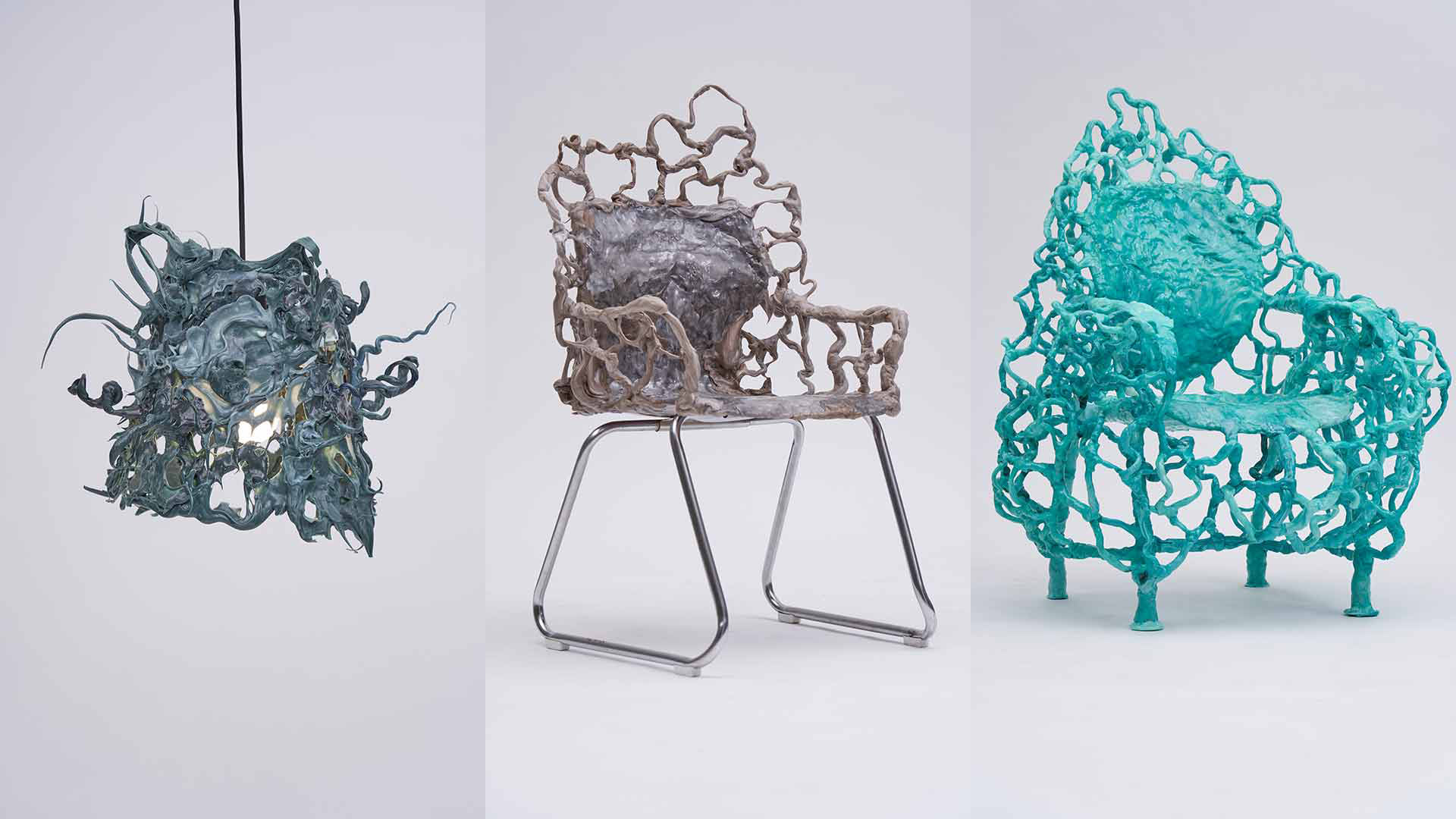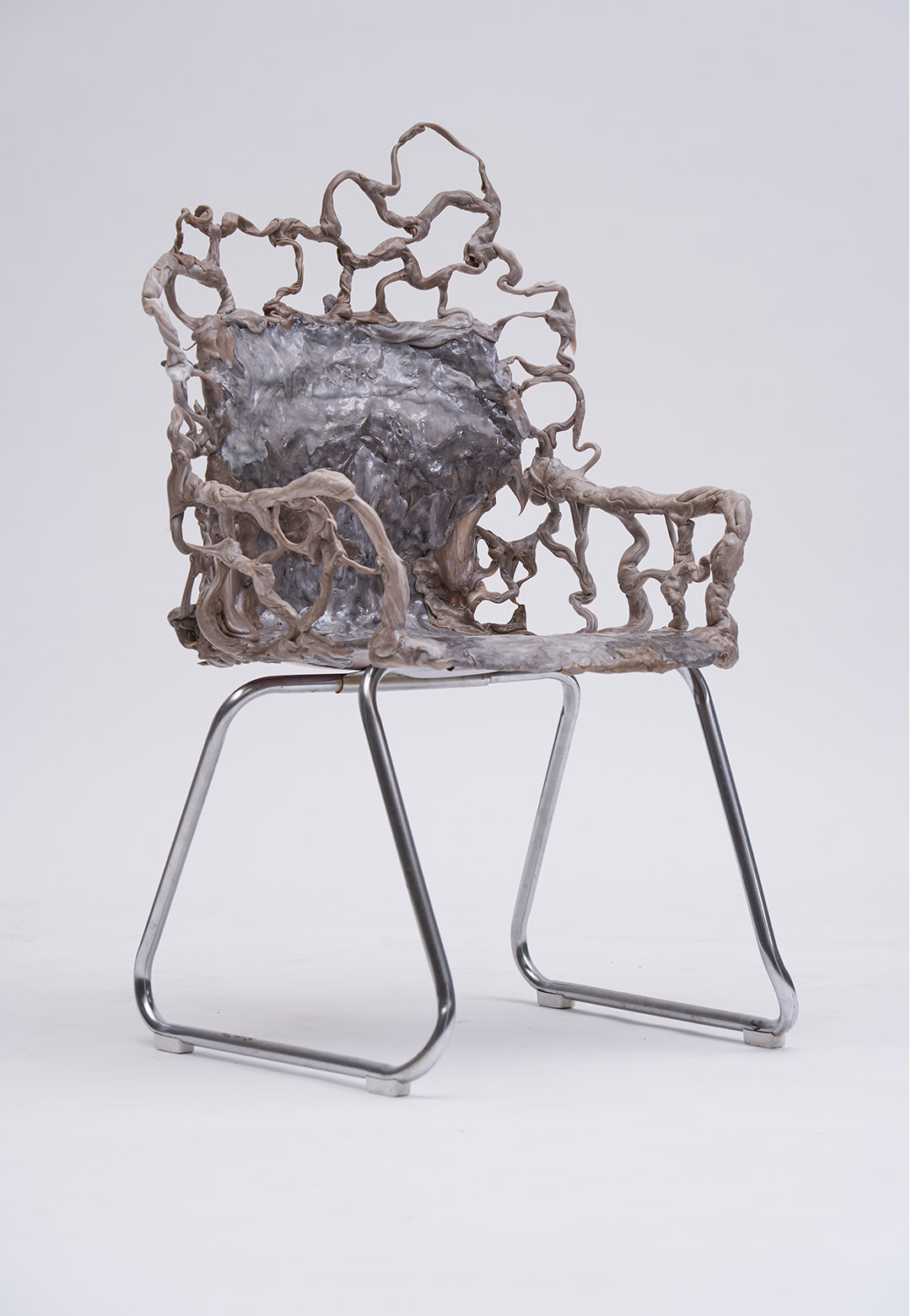In a world grappling with the environmental repercussions of excessive waste, designers are increasingly turning their creative process towards repurposing discarded materials into simple and meaningful pieces of furniture. The escalating consequences of excessive waste, including pollution and resource depletion, have spurred a vital need for innovative solutions. Korea-based furniture designer Won Jae Sung stands at the forefront of this movement, crafting unique works of art that combine children’s toys known as moolastic and special makeup materials. Sung breathes new life into abandoned off-the-shelves products, transcending their conventional forms through a meticulous process of boiling, colouring, shaping, and manual crafting.
Sung’s latest collection Always Break serves as a testament to his commitment to breaking away from conventional design norms and embracing disruption. This distinctive collection, comprising both lighting fixtures and chairs, invites viewers to appreciate the beauty found in intentional breaks and fractures, challenging perceptions of stability and permanence in furniture design. The title encapsulates the essence of the product designer’s philosophy; a deliberate invitation to recognize the transformative power inherent in intentional breaks. Sharing his design ethos behind the collection, the Korean designer says to STIR, “In embracing intentional breaks, we challenge the assumed durability of furniture, fostering a deeper appreciation for the fluidity and adaptability inherent in innovative designs”.
The lighting fixtures within the collection are not mere sources of illumination, they are artistic statements that play with light and shadow. Sung’s crafting process, coupled with the use of discarded materials results in pieces that cast intricate patterns, transforming ordinary spaces into captivating environments. The breaks in these lighting designs become conduits for light, symbolising the potential that arises from embracing imperfections.
Complementing the lighting fixtures are the chairs within the collection. The product designer’s bold reinterpretation of traditional chair design introduces organic, growing spines on the armrests and backrests. This departure reshapes perceptions of everyday objects. The incorporation of symbolic elements goes beyond aesthetics, it underscores his conviction in infusing meaning into every design, prompting viewers to reflect on the potential for reinvention within the seemingly mundane.
Sung’s journey into the world of sustainable design was sparked by the discovery of Polymorph, a versatile material commonly used in special makeup and children’s toys. This revelation became the cornerstone of his exploration into recycling discarded ready-made products. The result is a unique product design collection that blends the familiar with the innovative, connecting the dots between seemingly unrelated materials and eco-friendly aspirations. The designer’s creative process begins with carefully selecting discarded ready-made products. The criteria focus is on the fixed appearance and common form of these products. The varied expressions and colours are inherent in each item become a pivotal aspect.
A standout creation in the collection is the Fniss Light project, where the lighting designer repurposes Ikea waste into a captivating lighting fixture. The exterior of an Ikea Fniss trash can becomes the frame for this piece, symbolising the gathering of garbage in one central place. Thorns, painstakingly expressed through manual crafting, grow from the light cover, prompting contemplation on the pervasive issue of mass garbage. Sung’s ability to infuse artistic expression into his design challenges conventional manufacturing processes, pushing the boundaries of creativity and sustainability.
The symbolism embedded in Sung’s works is particularly evident in his chair design series, where thorns take centre stage. Drawing inspiration from the protective nature of thorn trees, he incorporates them into his designs as a metaphorical shield against environmental degradation caused by mass disposal. The integration of this symbolism adds layers of meaning to the pieces, prompting us to reflect on the broader implications of our consumption choices.
In the transformation of high-pack chairs, a commonly discarded item in offices and schools, the designer disrupts the traditional and fixed image associated with such furniture. Departing from the commonplace, he introduces organic, growing spines on the armrests and backrests. Sung’s work beckons reconsideration of how we perceive and interact with everyday objects, pushing the boundaries of design beyond mere functionality.
The connection chairs project takes a poignant approach to repurposing off-the-shelf chairs. Acknowledging the discarded nature of these items, the designer emphasises organic connections inspired by the intricate beauty of DNA cells. This project becomes a metaphor for the diversity and strength found in human and business relationships. By showcasing the importance of organisational maps and the power of dozens of organic connections, Sung highlights the resilience that can be found in the seemingly fragile and weak aspects of these connections.
Sung’s thematic emphasis on relationships, both personal and professional, adds a layer of depth to his creations. Through the incorporation of spines and organic connections, his designs convey the message that while individual connections may appear weak, a network of relationships can be a formidable strength. As the designer continues to explore the intersection of sustainability and design, his creations evolve into more than just functional pieces. They become narratives, stories, and messages that transcend the boundaries of traditional furniture.
This designer envisions a future where material selection and design expressions become even more challenging and experimental, presenting the public with reinvented forms that encourage a broader embrace of environmentally conscious practices and upcycled design. When exploring this designer’s works, viewers are invited to wonder about the potential transformations that discarded ready-made products could undergo. The expressive meanings embedded in each piece prompt contemplations and reflection, urging us to think about our relationship with waste and the possibilities that lie within repurposing. Sung’s Always Break serves as a testament to the power of creativity in turning the overlooked into the extraordinary, offering a glimpse into a future where sustainable design shines.






 Sign in with email
Sign in with email










What do you think?